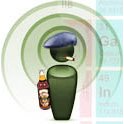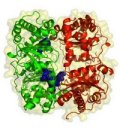 I received a job ad indirectly from the Living Fuel website today, it seemed like a fairly run of the mill science writing job asking for a ghost writer-researcher to assist in writing a weekly health newsletter etc…
I received a job ad indirectly from the Living Fuel website today, it seemed like a fairly run of the mill science writing job asking for a ghost writer-researcher to assist in writing a weekly health newsletter etc…
Usual kind of online job ad in other words.
The prospective candidates need experience in health and nutrition, obviously, and must be skilled at taking complex information and effectively communicating it to lay people. So far, so good.
One final qualification was asked for: “Working knowledge of the Bible a plus.”
Now, that’s not a run of the mill request for a science writing job. In fact, that has to be one of the most peculiar requirements for a scientific writing job I’ve ever seen. I don’t think even CS Monitor expect their science journos to have a working knowledge of the Bible. I was, however, intrigued and so took a look at the site. The first thing I noticed is that they’re basically selling some kind of health supplements. Fair enough. A testimonial from a satisfied customer provides no clues as to the Biblical intent, although the effects do seem miraculous.
Here’s the quote:
“I have had asthma since running competitively in high school and don’t like taking medications. Living fuel keeps my body alkalized and in balance so I can breathe clearly and naturally. Since using Living Fuel, I made the 4k World Cross Country Championships and finished 4th in the 2004 Olympic trials for the Steeplechase. I’m counting on Living Fuel to fuel me all the way to the 2008 Olympics!”
-Isaiah Festa, Madison, Wisconsin, USA”
Most of us don’t like taking medications, but the word medications is just that, a word. Taking any kind of supplement that has such a radical effect on the body as “alkanization” is essentially a medication whatever you call it. After all, nutraceuticals don’t sound like nutritional pharmaceuticals for nothing. The web seems to be full of product sites selling foods and supplements that claim to “alkanize the body” but I could find no mention of this “process” on any .edu or .ac.uk site and only one mention of the phrase in PubMed with regard to cell pH. Am I missing something, here?
Regardless, I’m still confused as to where the Bible reading comes into the job, I could find no mention of Christ on the site, and only a pdf file that cites Genesis in the references in the context of longevity. Needless to say, I probably won’t be applying for the job. I’m sure after reading my review of Richard Dawkins’ The God Delusion, they wouldn’t want to take me on anyway.
 The day the UK’s medicines approval agency NICE, announces that certain Alzheimer’s drugs are to be limited to those in the latter stages of the disease to get the best value for money, I read a Nature press release announcing a novel approach to treating the disease based on supercharging an enzyme that looks like the video game character Pac-man. US researchers have determined the crystal structure of a protein-degrading enzyme as it binds to its natural protein substrates.
The day the UK’s medicines approval agency NICE, announces that certain Alzheimer’s drugs are to be limited to those in the latter stages of the disease to get the best value for money, I read a Nature press release announcing a novel approach to treating the disease based on supercharging an enzyme that looks like the video game character Pac-man. US researchers have determined the crystal structure of a protein-degrading enzyme as it binds to its natural protein substrates. I received a press release today from a US company addressing me by name and asking me whether I’d like to write about nanocardiology. Apparently, the company has a nanotech product in pre-clinical trials that cleans up arterial plaques. The putative product from St Louis company Kereos is based on endothelial alpha-v-beta-3 integrin-targeted fumagillin nanoparticles and can seek out markers for arterial plaques and help break them down.
I received a press release today from a US company addressing me by name and asking me whether I’d like to write about nanocardiology. Apparently, the company has a nanotech product in pre-clinical trials that cleans up arterial plaques. The putative product from St Louis company Kereos is based on endothelial alpha-v-beta-3 integrin-targeted fumagillin nanoparticles and can seek out markers for arterial plaques and help break them down. Extracting oil from olives requires solvents and residues of halogenated solvent can sometimes leave a toxic taint in the product. European Union rules restricted the acceptable levels of these residues for the sake of public health but new sensitive and precise analytical procedures are needed to allow strict quality control and regulatory testing to be carried out.
Extracting oil from olives requires solvents and residues of halogenated solvent can sometimes leave a toxic taint in the product. European Union rules restricted the acceptable levels of these residues for the sake of public health but new sensitive and precise analytical procedures are needed to allow strict quality control and regulatory testing to be carried out.